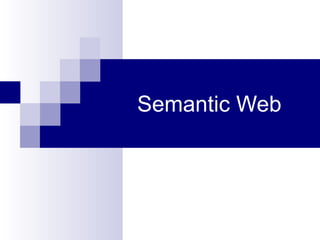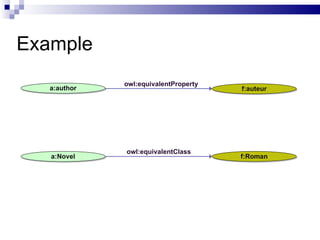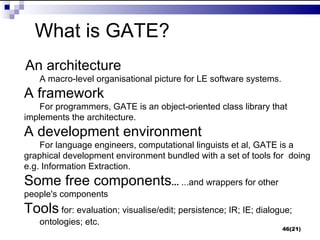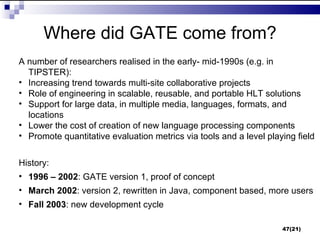The document provides an overview of the Semantic Web including definitions of key concepts like RDF, RDFS, OWL, and applications. It describes the Semantic Web as extending the current web to give data well-defined meaning enabling computers and people to better cooperate. The layers of the Semantic Web are outlined including XML, RDF, RDFS, OWL, and how each builds on the previous. Examples of RDF graphs and syntax are given. Semantic Web applications like Swoogle, DBpedia, and Flickr are also mentioned.

















































